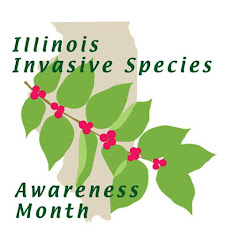Jennifer Behnken, Urban
and Community Forestry Coordinator
Southern Illinois University Carbondale, Dept. of Forestry
Agriculture Building - Mailcode 4411
1205 Lincoln Drive
Carbondale, IL 62901
Phone: 618/435-3341
Fax: 618/453-7475
jbehnken@siu.edu
Southern Illinois University Carbondale, Dept. of Forestry
Agriculture Building - Mailcode 4411
1205 Lincoln Drive
Carbondale, IL 62901
Phone: 618/435-3341
Fax: 618/453-7475
jbehnken@siu.edu
Illinois
Stop the Spread!
Callery
Pear Alternative Tree Demonstration Fall Planting
Saturday,
November 1, 2014, 9:30am-11:30am
Attucks
Park/ Pyles Fork Reserve, 800 N. Wall St. Carbondale, IL
The
Callery pear (also known as Bradford pear) is a potentially problematic tree
for land managers and residents alike, prone to splitting and demonstrating
invasive tendencies. The Illinois Stop the Spread! campaign
provides a positive solution to the problem of the Callery pear by identifying
and promoting available species of native trees and shrubs which consumers,
landscapers, and city planners may select as alternatives. We continue these planting efforts at Attucks
Park/Pyles Fork Preserve in Carbondale with the next installment of native
trees and shrubs.
Join us in the festivities to see
how you can help extend our message and Stop
the Spread in Illinois! Come one,
come all to view and participate in our planting project! Approximately 20 trees and shrubs of varying
species with desirable characteristics to serve as suitable replacements for
ornamental pear trees will be planted with volunteers on the first Saturday
morning of November 1st, starting at 9:30am. Sport your favorite pair of work gloves and
head on down to Attucks Park to help!
There will be a brief overview of tree planting methods followed by the planting
itself. Light refreshments will be
offered.
This is a volunteer project and as
such, we are asking for your help.
Please consider donating to Green Earth to supplement our efforts. Funds will be used to offset costs of printing
outreach materials which will be free to the public, as well as materials for
tree maintenance, such as fertilizer and mulch.
Even one dollar can go a long way; all support, personal and businesses
alike, is greatly appreciated!
For further inquiries, contact
Jennifer Behnken, Southern Illinois University's community forestry coordinator
at 618-453-2517 or jbehnken@siu.edu or Karla Gage, coordinator at River to
River Weed Cooperative Management Area at 618-998-5920 or rtcwma@gmail.com.
